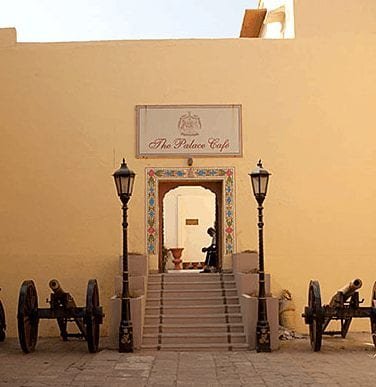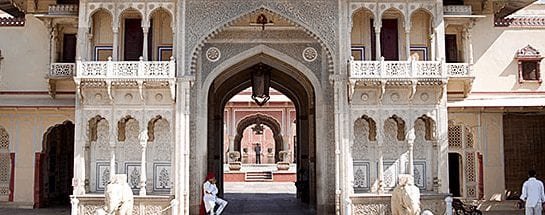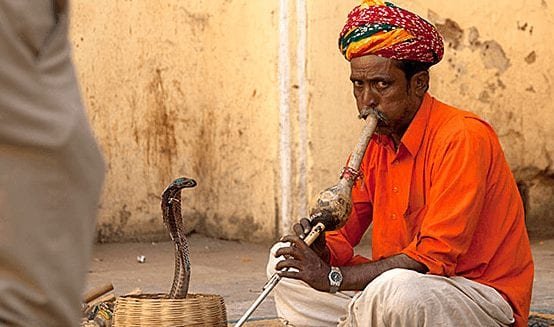
City Palace of Jaipur
About City Palace Jaipur
Jaipur, the Pink City, got its name because of the color of the walls which are pink. The old city also is known as the walled city has many monuments that showcase the rich architecture of the era. City Palace Jaipur comes first in the list because it’s the home of the Royals. Situated in the central part of the city, this is an ultimate tourist attraction. The City Palace is just a few kilometers away from the Railway station and the inter-state bus stand. The City Palace is in the center of Jaipur, Rajasthan, and covers 15% of the Pink City area. Sawai Jai Singh built it in between 1729 to 1732. City Palace is one of the major attractions for tourists. It got the name of City Palace by differentiating it from Amer Palace. It is, besides the historical place, also the residence of the current king of Jaipur.
Overview of City Palace
Built Year 1729-1732 AD
Built By Sawai Jai Singh
Visiting Hours 9:30am to 6:00pm (entry till 5:00pm)
Holidays Gangaur and Teej 9:30 am to 2:00 pm, full close on Dhulendi
Fee for Indian Nationals Adult Rs. 75=00 each, Children (between 5 to 12 years), Students and Defence personnel Rs. 40=00 each
Fee for Foreign Nationals Adult Rs. 300=00 each (including still camera), Children (between 5 to 12 years) each and Students Rs. 200=00 each (including still camera)
Royal Grandeur Rs. 2,500=00 each (Foreign Nationals),Rs.2,000=00 each (Indian Nationals)
Camera Fee Still Camera (Indian Nationals) Rs.75=00,Video Camera Rs.200=00
City Palace Architecture
Maharaja Sawai Jai Singh built this beautiful palace during his reign. With its marvelous art and architecture separates The City Palace from other monuments. City Palace area is a series of gardens, courtyards, and buildings. The architecture and design were mainly started in the reign of Raja Jai Singh, later developments were constructed later by the succeeding rulers. Some of the maharajas filled the palace with scientific and artistic treasures, while others focused on public works. The palace is now a museum.
History of City Palace
The fortification of the Palace separates it from other Rajput Palaces. Different independent subparts form the City Palace premises. The City Palace complex is surrounded by a high wall and is divided into a sequence of courtyards, gardens, and other similar buildings that showcase the marvelous fusion design of Rajput and Mughal architecture. The glorious Chander Palace is the center of complex and is still the residence of the ruling family. Other beautiful architectures are like Mubarak Mahal, Diwan-i-Khas, Sarvatobhadra, and Pritam Niwas. It was opened in 1950 for public viewing and still expose the royal bygone era. The City Palace exhibits the superior interior designs coupled with highly decorated gateways provides a great opportunity to feel the royal life. The history of the palace goes like this, it was built in the year of 1729-1732, it took four years to carve out this splendid monument. The then-reigning King of the state Maharaja Sawai Jai Singh built the city palace. He is also credited to be the main architect behind the city, he made the city around the fort and that’s why the city got its name after him.
Attractions of City Palace

City palace has been since then used by the descendants of the royal family of Jaipur and it was in 1950 when the door of the City Palace was opened for the public and since then it has become one of the most visited tourist centers in the state. The architecture is inspired by the Mughal architecture as like most of the monuments and forts of that era. The symbol of luxury, City palace, has been divided into five main parts and they are famous for their unique design and exclusive paintings. The Chandra Mahal, or Moon Palace, is famous for its painting, fine decorations, and mirror work. This seven-storied building was constructed by Sawai Jai Singh.
Chandra Mahal
Chandra Mahal or Moon Palace is the seven-storied palace built by Sawai Jai Singh. Built at the northwest corner of the complex, the apartments of Chandra Palace are adorned with beautiful paintings, floral decorations, and mirror work. It is also famous for arish work in which the wall is decorated with like plaster painted with motifs in floral designs. Chandra Mandir and Shobha Niwas are two most beautiful apartments. Only some parts of the Chandra Mahal are opened for public, the ruling family still resides in Chandra Mahal. There are four magnificent gateways, decorated with peacocks designs and other eye-catching patterns, in Pritam Niwas Chowk which depicts the four seasons of the year.
Chandra Mandir
The Chandra Mandir stores a great museum with a great collection of antique and rare manuscripts. Different types of royal grand outfits are also showcased The Shobha Niwas provides a stunning view when light falls on a large number of colored glass. On the top of the palace is the Mukut Mandir, which is dedicated to Lord Krishna.
Diwan-i-Khas

Diwan-i-Khas is the hall of private audience in the center of the courtyard. It was built in 1730 with a beautiful gallery paved with marble. This hall contains two large silver vessels known as urns or Gangajalis, which are used by Sawai Madho Singh to carry pure Ganga water during his England trip in 1902 to attend the coronation of King Edward VII. These urns are in the pages of Guinness World Records for being the largest object of silver metal.
Diwan-i-aam
Diwan-i-aam is the hall of public audience was build in 1760, used to conduct formal functions. Now, it has been converted into an art gallery. The hall preserves the glorious chandeliers, painted ceilings built with semi-precious stones. Mubarak Mahal is a double storied building located in the southwest corner, next to Jantar Mantar. It was the guest house of the king, and now it is a part of the Palace Museum. The exteriors of the palace are beautifully designed with marble. Sileh khana or Armoury is located next to the Mubarak Mahal in the opposite direction to that of Jantar Mantar. This contains the antique weapons and instruments of the 15th century.
Mubarak Mahal
Mubarak Mahal, meaning the ‘Auspicious Palace’, was built with a fusion of the Islamic, Rajput and European architectural styles in the late 19th century by Maharaja Madho Singh II as a reception center. It is now a museum of royal costumes.
Entrance Gates of City Palace

There is 3 entrance gate to the city palace complex which are Virendra Pol, Udai Pol near Jaleb chowk and the Tripolia Gate (triple gate). The entry from Virendra Pol leads to the Mubarak Mahal. The gateways are richly decorated.
History of the Rulers
The Kachchwaha rulers of Amber-Jaipur trace their descent from Kush, the son of Ram, an incarnation of Lord Vishnu. Ram was the universal monarch, but he divided his entire empire into eight parts amongst his sons and nephews. The offshoots of his second son Kush moved their strongholds from eastern to central India and finally sometime in the11th century Prince Dulha Rai left his patrimony of Narwar for Dausa in Eastern Rajasthan.
Brigadier H.H. Maharaja Sawai Bhawani Singh, MVC of Jaipur (1931 – 2011 A.D.)
H.H. Maharaja Sawai Man Singh II (1911-1970 A.D.) Maharaja Sawai Madho Singh II(1880-1922 A.D.)Maharaja Sawai Ram Singh II(1835-1880 A.D.)Maharaja Sawai Jagat Singh(1803-1818 A.D.)Maharaja Sawai Madho Singh I(1751-1768 A.D.)Maharaja Sawai Ishwari Singh(1743-1750 A. D.)Maharaja Sawai Jai Singh II(1700-1743 A. D.)Mirza Raja Jai Singh (1621-67 AD.)Maharaja Man Singh I (1589-1614)Raja Bhagwan Das (1574-1589 AD.)

